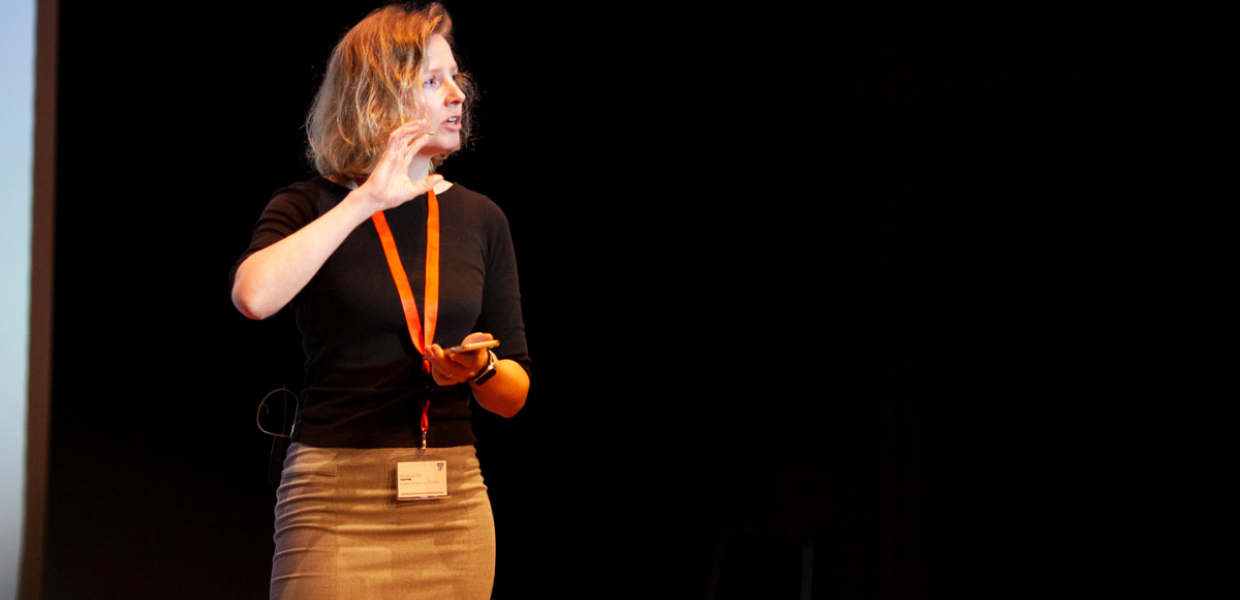Tell us about your current role.
Since September 2017 I've been leading the Digital Humanities Research Lab at the Royal Netherlands Academy of Arts and Science Humanities Cluster (KNAW HuC). We work on advancing computational methods for humanities research. We mostly focus on language technology and semantic web, with the occasional excursion to network analysis and computer vision. My work is part research, part management, and part fostering collaborations across the Humanities Cluster (an alliance of three research institutes).
What was your career path to your current role?
My BA and MA were in Language and Artificial Intelligence, and I was interested in language and computers from quite early on. For my Ph.D. project, I spent a good chunk of my time at the Naturalis Biodiversity Center, the largest natural history museum in the Netherlands. My project was funded by the Continuous Access to Cultural Heritage (CATCH) programme that the Dutch Research Council ran for 10 years. Initially, projects in this programme were set up as collaborations between computer science departments and heritage institutions. This is where I really learnt to work across domains and also realised that there is so much potential in the combination of these different disciplines - and I really like working at this intersection!
After my Ph.D., I transitioned into another CATCH project, Agora, where we collaborated with historians, the Rijksmuseum and the Netherlands Institute for Sound and Vision. We extracted and modelled the ‘who, what, where and when’ in collections to make links between objects based on the events depicted in or associated with them, rather than metadata such as who created the object and what materials were used. I then did another postdoc on the FP7 funded NewsReader project, where I continued working on event-based information extraction and modelling, but then with journalists and decision makers.
What are you working on right now?
I have three research strands that may look disjointed to an outsider, but for me are very much connected through the methodologies I use and the way I approach these projects! The first is a H2020 funded project called Odeuropa where we aim to make our scent heritage searchable.
I’m also one of the scientific directors of the Cultural AI lab, a collaboration between various research and cultural heritage institutions in the Netherlands aimed at improving AI through cultural heritage and improving cultural heritage through AI. One of the things I’ve seen is that digital humanities research can be one-way traffic; the knowledge of the humanities scholar and archival sources aren’t used to improve AI systems. With this lab, we want to integrate knowledge from the heritage institutions (both from their archives as well as their collection managers) into AI systems such that we can make them less biased and more inclusive.
Finally, I’m working with colleagues from the UK, Norway and the Netherlands on a small Alpro foundation funded project to investigate the sustainability of Dutch, German and British diets over time.
What do you think is the biggest opportunity AI presents for the cultural heritage sector?
We can and should use AI technologies to make cultural heritage more accessible. This means not just searchable, but also more insightful to identify gaps and imbalances. I think there’s a big opportunity here to work together with visualisation experts and data scientists.
What is the biggest challenge?
The biggest challenge I think is to overcome our blind spots, both in terms of data and technology, and to make our data and AI systems FAIR and transparent. I think now there is a big trend towards deep learning. I see it with all my students (it’s the first thing they want to try), but when we have such complex things to communicate to the world as our cultural heritage, we need to know what the system did to get to a particular enrichment or link between objects. So I would like to take a step back and see what we can do with more ‘old-fashioned’ techniques.
In five years time, what do you hope that AI has brought to cultural heritage?
I hope that AI will have helped us uncover or rediscover interesting corners of our heritage collections. At Rijksmuseum, most people will know the Nightwatch and go straight there, but this and other institutions have millions of other objects that are just as interesting. Research by my Cultural AI colleagues found that also in online searches a lot of these lesser known objects just don’t come to the surface. I hope we can change that!
A study from 2018 suggests that just 12% of machine learning researchers are women. What do you think can be done to encourage more women into the field?
This is a difficult one because there are just so many aspects to this problem, from lack of visible role models, affordable childcare and (at least in the Netherlands) women generally working fewer hours than men. I think we can start with making women more visible, and there are loads of awesome women working in machine learning (see for example WiML). What’s really needed is a culture change where diverse teams (which are found to perform better in many situations) become the default. What has helped me personally is having a few mentors to bounce ideas off. Aside from that, everyone can pay attention to not only invite men to a panel, as keynote speakers or to their grant proposal.



